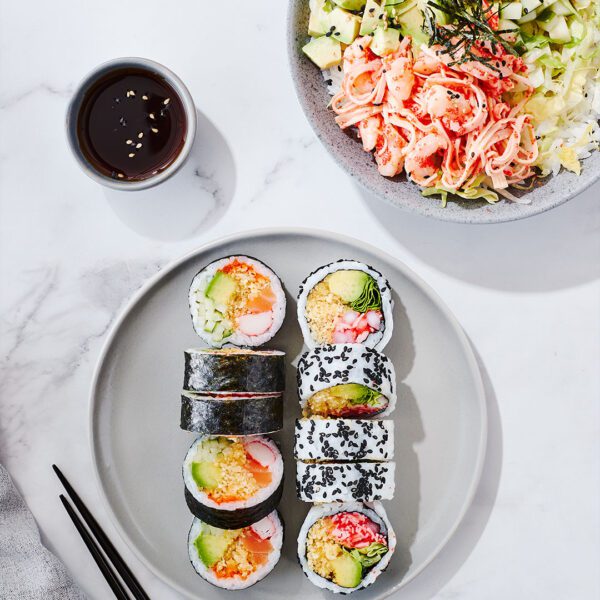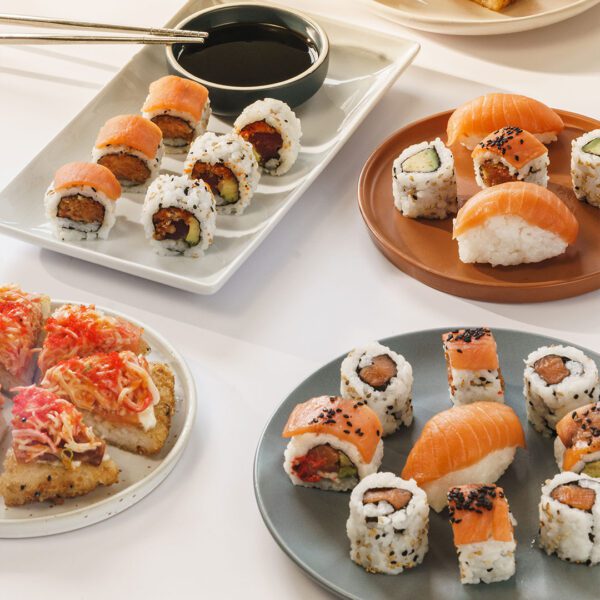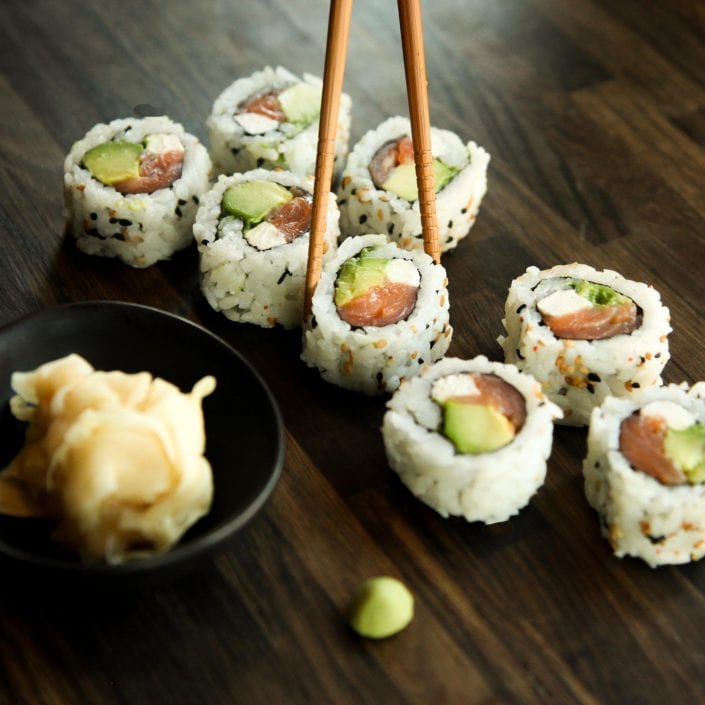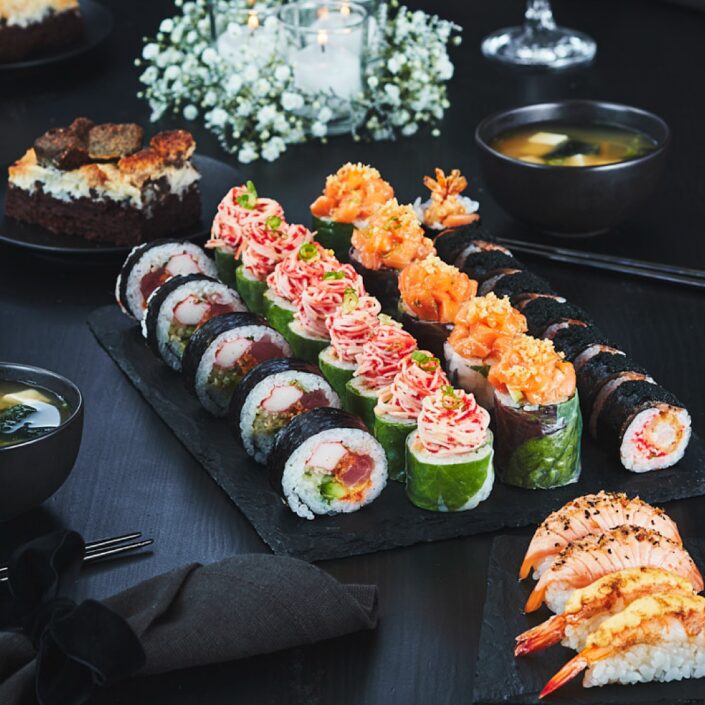For sushi lovers, we warn, there will surely be astonishment in this read!
We start strong, specifically with the exact origin of sushi!
Indeed, sushi is by no means of Japanese origin but born in China in the 4th century1 BC AD. and we would gladly lend them the role of fish preservative. According to the work of archaeologists such as Naomichi Ishige, the ancestors of sushi were born in the mountainous regions of Southeast Asia, near the Mekong river and was first known for its virtues as a preservative. Indeed, the fermentation of steamed rice, which was stored in pots for several months, allowed the fish to be eaten for up to a year later, a revolution for that time. But it took more than this, to create what we know as sushi today. A story that still has a strong history!
How was sushi born?
It is difficult to date with certainty the first appearance of sushi. Their very creation did not happen overnight; it was, say centuries of broken down rituals, rolls made and remade so that we could end up with the sushi we know today.
It was during the Muromachi period (1392-1573)2, that we rediscovered the preservation properties of fermented rice, the process of which consisted of putting the fish in the rice, often fermenting for up to a year, the rice thus preserving the rotting fish. This method disappeared from China and reappeared in the sixteenth century in Japan.
Narezushi3 “mature sushi”, was the name of this famous fermented sushi. It is one of the oldest varieties of sushi prepared with either freshwater or saltwater fish. The population opted for the species that were most widespread in their region: common dace and ayu for the west of Hokkaidō, and Japanese jack mackerel, salmon and spraids for other regions. Most families had their recipes, but all shared a similar methodology. The fish were gutted and stripped of their skins. When using small fish, they removed the head and entrails. As for the large fish, they were cut into fillets. They would cover them with salt, before placing them in a small wooden box called oke. After a few days, usually 5, they removed the fish from the oke, and garnished them with rice and then put them back in their box.
The final step, but certainly not the least, they would sprinkle the fish with salt one last time and closed the oke with a tsukemonoishi – a stone or block of wood that they used as a cover. The more days went by, the more the fish would ooze and get rid of all the liquid it contained: this phenomenon was called: lactic fermentation.
It was only after 6 months that the narezushi could finally be tasted. Indeed, the bones had become sufficiently tender and the unpleasant taste of the fermented fish had disappeared, giving way to a delicate flavour. There is evidence of the development of this consumption during the Nara Period, in particular with the Kin-jinja temple of Shiga prefecture, which was dedicated to the mushroom used for the production of narezushi.
It wasn’t until the 1500s that people began to consume half-fermented fish and rice together, paving the way for modern sushi.
Sushi and it’s trip around the world
While this traditional way of consuming this delicacy continues to this day, its presentation has continued to evolve over time. One of the most noteworthy developments was when the fish was no longer wrapped in rice but placed on top of a compact dumpling, this is what we now call nigiri sushi.
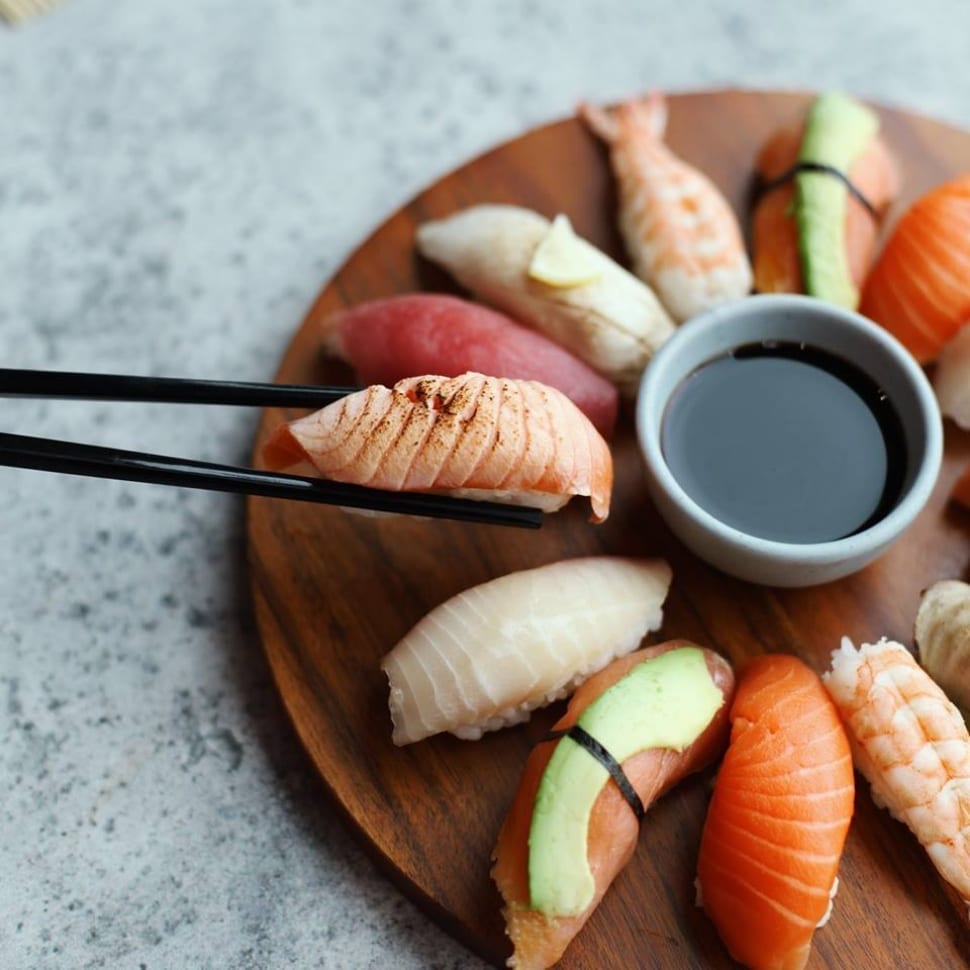
Immerse yourself in this history with our Nigiri. Most popular: Nigiri Syake. Fresh fish or seafood thinly sliced and delicately placed on lightly vinegared rice. A perfect combination of texture and refreshing flavours served in 2 pieces. For the more adventurous, we recommend you try the Nigiri Inari, with its fried and marinated tofu, stuffed rice, and it’s crispy sweet potato, a true delight!
Subsequently, sushi became very popular and spread quickly. Its first democratization was its consumption in the street as a kind of “snack bar“. In the era of modernization in Japan, the consumption of sushi became more and more regulated, it was then that small vendors appeared, then sit-down dining. It was then the door opened to the crossing of borders.
First stop: the USA and Canada in the 1970s5; Americans could easily promote them with the slogan of “healthy food”.

After having set up an industrial system for the production of this Japanese dish, creativity continues to assert itself, for example, by adding local products such as mayonnaise in what we know today as California Rolls. Then, Western Europe came a little later, to give its two cents, but above all very quickly, in France, will become the first consumers of sushi in the world.6
The same goes for Sushi Shop! The adventure began in 2000 at the Atwater Market, and since this opening, the brand has never ceased to prosper and today has nearly 150 establishments located across Canada. Some franchises were even created in the United States under the name of Ginger Sushi Boutique, which made it possible to represent a market today of 3 billion dollars. Since opening our first store 18 years ago, our Sushi Shop brand has flourished and now has nearly 150 locations across Canada. We now operate our franchising business as Ginger Sushi Boutique in the United States, where sushi is now a 3 billion dollar market!
Call on the expertise of Sushi Shop and prepare your order online now, or visit us in-store and taste the history!

